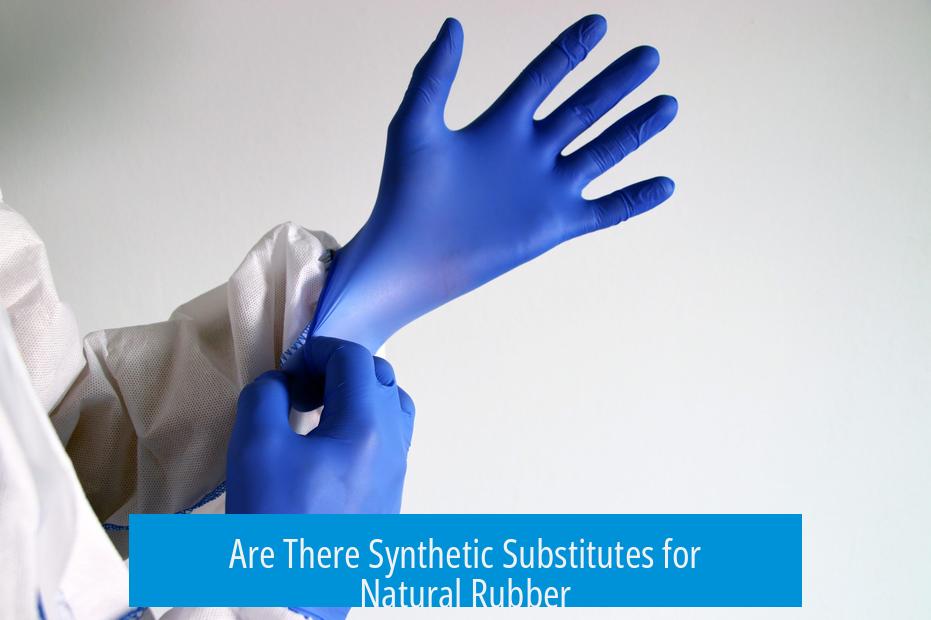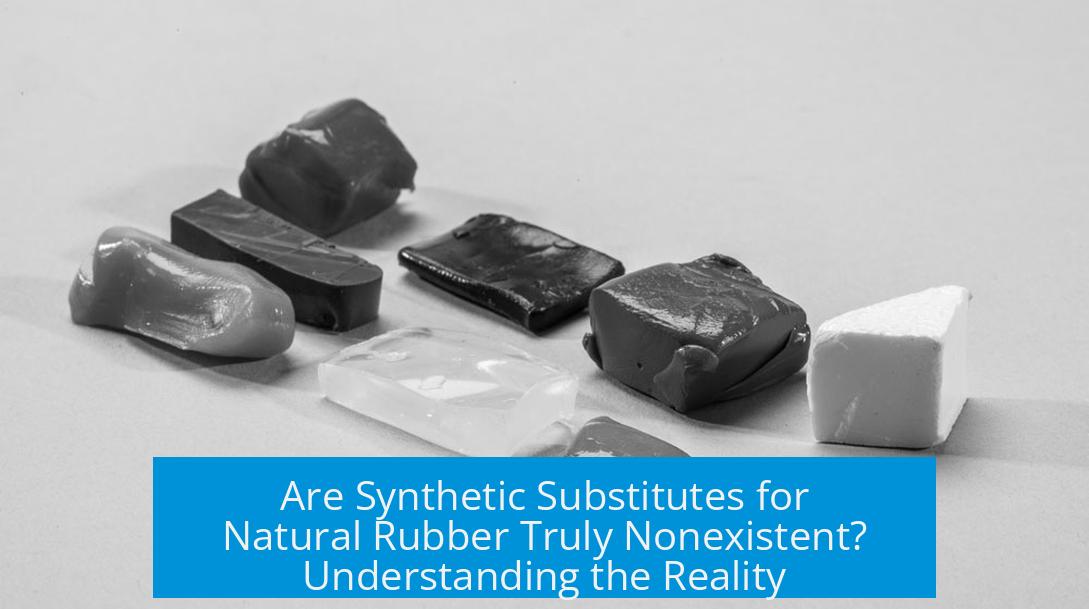Are There Synthetic Substitutes for Natural Rubber?

It is true that fully replicating natural rubber synthetically is extremely difficult, and no synthetic rubber matches natural rubber perfectly in quality and properties. However, synthetic rubber substitutes do exist and are widely used, particularly in the tire industry.
Existence of Synthetic Rubber
Synthetic rubber is commonly produced from petrochemical sources such as crude oil and natural gas. For example, many car tires use synthetic rubber made from acrylonitrile-butadiene-styrene (ABS) polymers. These materials are designed to provide rubber-like characteristics but differ chemically from natural rubber.
Despite natural rubber’s price fluctuations, research and development continually improve synthetic alternatives or find more cost-effective synthesis methods.
Polymer Structure and Synthesis Challenges
Natural rubber is primarily polyisoprene, a polymer formed by selectively polymerizing isoprene where only one of its two double bonds reacts. Biology achieves this high selectivity naturally.
In contrast, synthetic attempts cannot control the reaction to target only one double bond of isoprene selectively. This lack of selectivity produces complex polymer mixtures rather than uniform, high-quality polyisoprene. This is why synthesizing natural rubber’s exact molecular architecture is challenging, lending some truth to claims about the absence of exact synthetic equivalents.
Differences in Mechanical Properties
The mechanical performance of natural rubber remains superior in areas such as elongation and tensile strength. Synthetic rubbers often fall short of these standards despite being easier or cheaper to produce.
Although synthetic polymers like polystyrene have been in use for decades, natural rubber’s unique combination of elasticity and durability continues to outperform most synthetic forms.
Economic and Industrial Context
Natural rubber remains the most cost-effective high-quality rubber, especially for tire manufacturing. About 80% of natural rubber production serves the tire industry, underscoring its importance.
Choosing between natural and synthetic rubbers involves balancing cost, mechanical needs, and production feasibility.
Key Takeaways
- Synthetic rubbers exist and are widely used but do not perfectly replicate natural rubber.
- Natural rubber’s selective polymerization is difficult to mimic synthetically.
- Natural rubber offers superior mechanical properties compared to synthetic variants.
- Economic factors drive the use of synthetic rubbers, but natural rubber remains key for high-quality applications.
Q1: Are there synthetic substitutes for natural rubber?
Yes, synthetic rubber exists and is widely used, especially in tires. Common synthetic types come from petroleum-based polymers like acrylonitrile-butadiene-styrene.
Q2: Why can’t synthetic rubber perfectly replace natural rubber?
Natural rubber’s polymerization is selective due to biology. Synthetic methods struggle to replicate this, making it hard to produce polyisoprene with the same quality.
Q3: How do the mechanical properties of synthetic rubber compare to natural rubber?
Natural rubber still outperforms synthetic types in properties like tensile strength and elongation. This affects durability and flexibility in applications.
Q4: Is cost a factor in choosing natural over synthetic rubber?
Natural rubber often costs less for high-quality production. Economic decisions balance price against performance needs in industries like tire manufacturing.
Q5: Has research improved synthetic rubber substitutes?
Yes, research aims to develop better synthetic rubbers or cheaper production methods. However, matching natural rubber’s qualities remains a challenge.





Leave a Comment